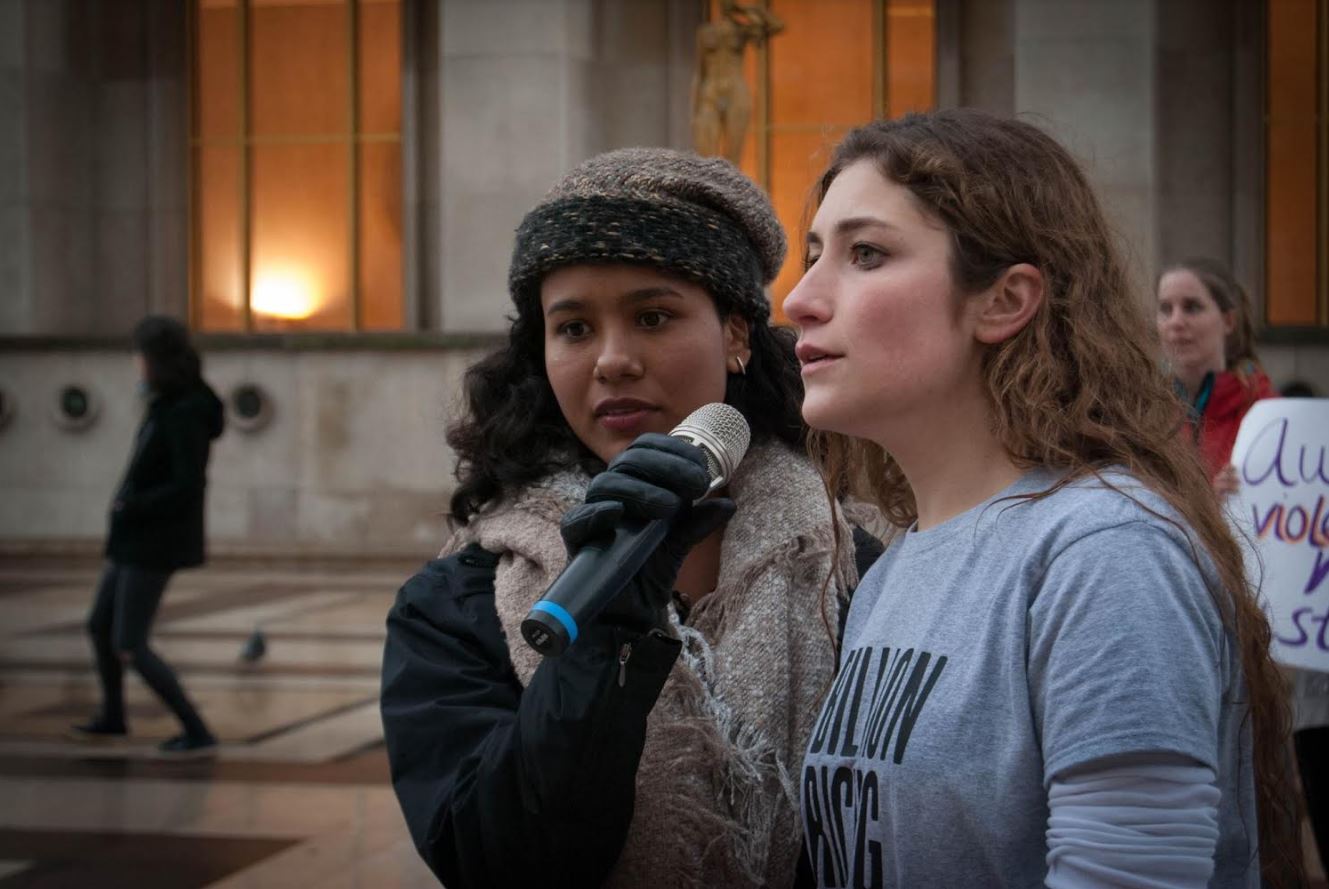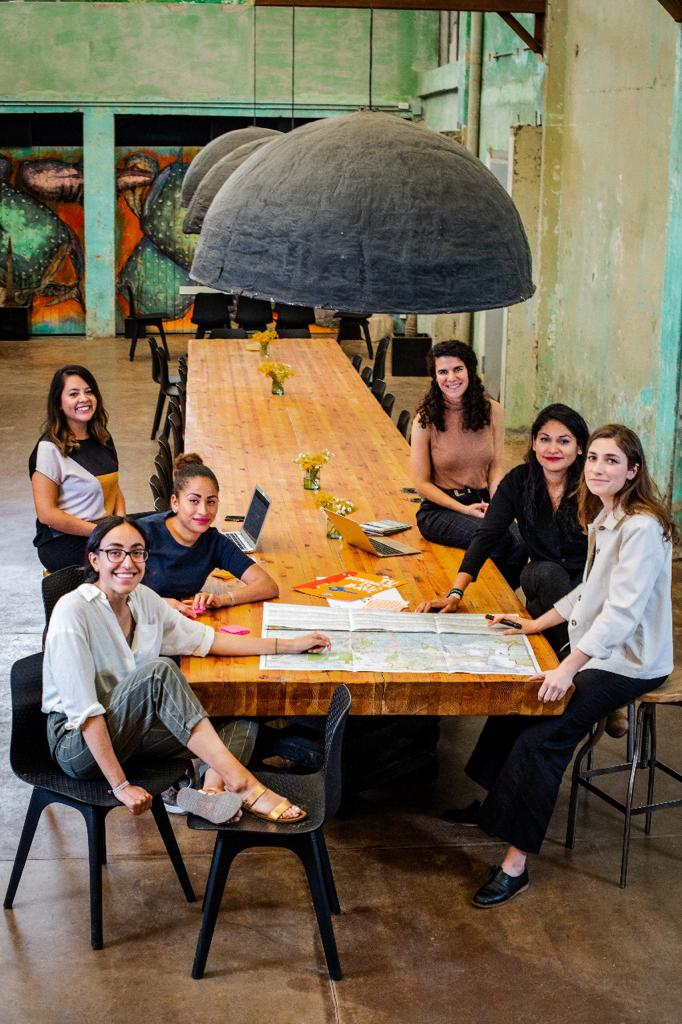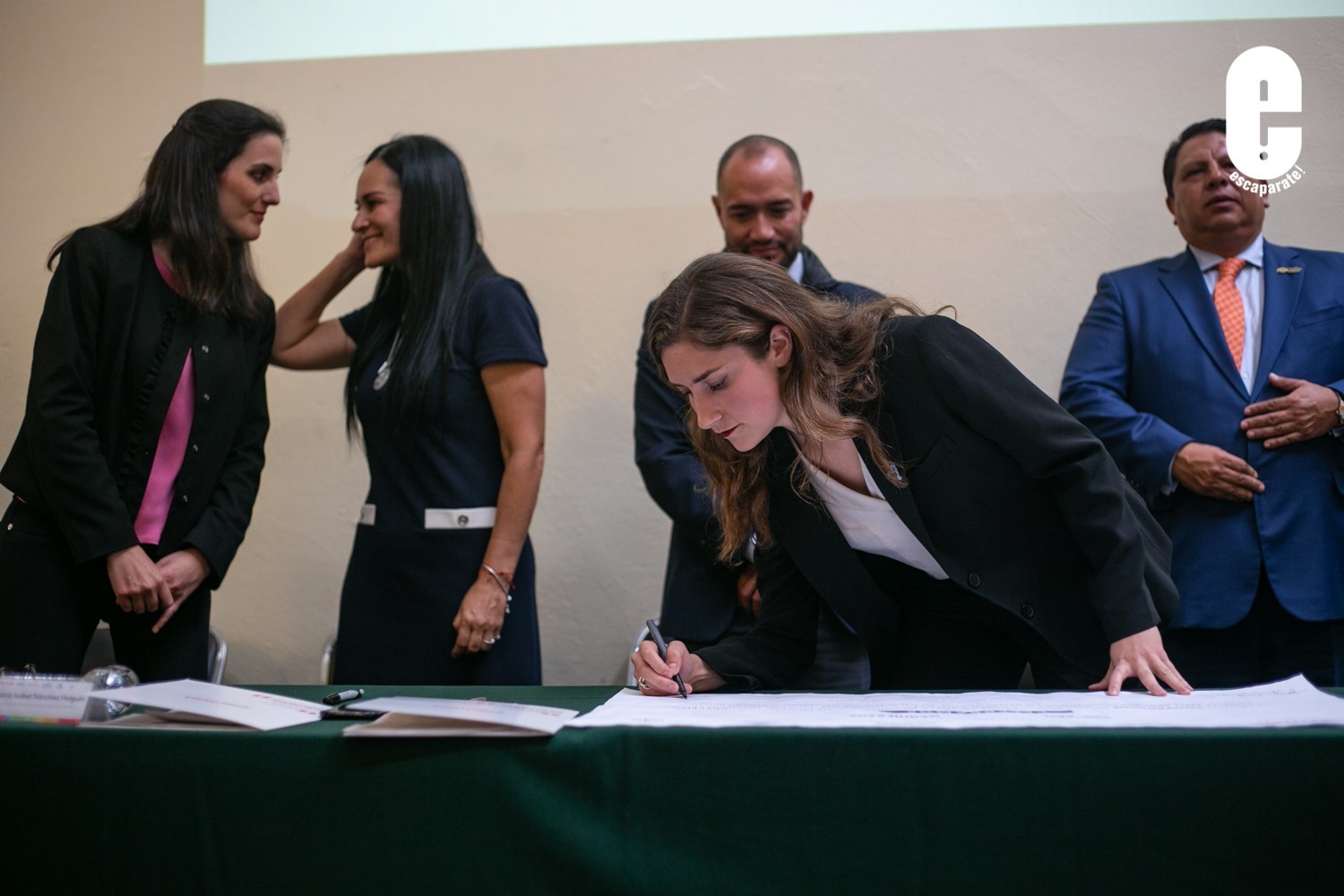Mariana Ruenes
President, Sintrata
Fellow project website: www.sintrata.org/en/
Mariana Ruenes exposes, confronts, and disrupts the human trafficking pipeline that exists alongside everyday people doing everyday things. She does this by engaging leading industries used by traffickers (e.g., transport, hospitality) and community members broadly in disrupting the traffickers’ systems and relationships.

THE NEW IDEA
Mariana makes visible what we do not see as we walk through our daily lives – an invisible infrastructure of human trafficking hiding “in plain sight.” In her grassroots work supporting human trafficking victims and survivors since 2011, Mariana came to realize that 99 percent of trafficking victims go undetected, even though they could easily be identified since traffickers use common tourism, transportation, and technology services. Based on this insight, Mariana shifted her strategy towards breaking the “production chain” of human slavery at multiple levels. In partnership with targeted industry-leading organizations, she has created new roles for thousands of front-line workers and enabled them to report trafficking activity without fear and to contribute real-time data to a shared trafficking database. By complicating the logistics of a crime that uses the infrastructure of cities to operate, Mariana and her organization SINTRATA have made human trafficking riskier, more difficult, and less profitable.
As Mariana came to realize that businesses have a unique potential and responsibility to disrupt human trafficking, she began to form partnerships with key players in strategically identified industries that make it more difficult for traffickers to operate. Mariana focused on engaging industry-leading companies such as Uber that have the power to influence their entire sector. When she partners with these companies, she conducts a diagnostic evaluation of their activity which uncovers the ways in which their services are vulnerable to exploitation by human traffickers. She then develops a customized plan for engaging their employees as workers and citizens who can improve the communities in which they live. By working with companies to develop and implement the conditions and tools needed for frontline workers to respond effectively and safely, Mariana and her organization, SINTRATA, have increased workers’ willingness to spot and report victims and perpetrators of human trafficking. The result? Victims are identified and provided justice while trafficking is disrupted, slowed, and prevented.

Studying patterns in the reported data led Mariana to see that the best people to report and intervene in real-time were those likely to come into contact with victims and traffickers. For example, based on patterns she identified where victims were being moved between cities within a trafficking network through ride-sharing services, Mariana partnered with Uber. Studying their business models and operations helped her put together customized approaches that use technology and tailored communications that would resonate with the needs and concerns of Uber drivers. By putting these pieces in place, SINTRATA was able to provide training and updates to over 300,000 employees, which enabled Uber drivers to report and gather real-time data from the local communities for SINTRATA. The increased reporting rates and more systematically collected data from Uber drivers translated into increased responses from law enforcement. Disrupting the trafficking networks also means less dependence on the justice system to process and respond effectively to crimes of human trafficking.
Mariana’s database on trafficking operations also enables more precise interventions. By expanding the understanding of how, when, and where traffickers operate, Mariana has uncovered and mapped what previously was a largely undocumented, largely invisible phenomenon. Her system for data gathering illuminates the activities of networks that strive to operate in the darkness, and this information is now being used to generate best practices, inform decision-making, guide technology supports, and foster large-scale and local coordinated action. Mariana’s approach is also leading to the reallocation of society’s resources towards the most effective, long-lasting solutions while providing an evidence base to influence policy and address long-term structural problems across sectors.
THE PROBLEM
According to the Global Slavery Index, on any given day, human trafficking affects more than 40 million people worldwide. In Mariana’s country of Mexico alone, there are believed to be more than 340,000 victims of modern slavery. However, the true magnitude of trafficking is unknown, for statistics like these only show identified cases, and this lack of data and information is one of the key reasons why human trafficking seems so intractable. It is estimated that less than 0.1 percent of victims – both in Mexico and globally – are reported; further, according to the International Organization for Migration, 80 percent of trafficking victims who have crossed borders have gone unnoticed at official checkpoints.
Identifying victims gets further complicated by the coercive nature of the crime of trafficking. Traffickers take advantage of human vulnerability, poverty, and despair and use physical threats and violence to force people into collusion or silence. In Mexico, they typically prey on girls from the countryside who live in poverty, have little education, and have repeatedly been abused at home. A psychological tactic traffickers use involves threatening their victims’ families with kidnapping or death. These and other factors make human trafficking fast-growing and highly lucrative.

Traffickers rely on cities’ infrastructure, services, and common goods, including buses, planes, taxis, hotels, and the Internet; yet businesses in these key industries are not actively involved in resolving this issue despite their central involvement and potential leverage. Through her research, Mariana found that front-line operators, such as drivers and hotel clerks, lack the knowledge and tools to safely identify, report, and respond to cases, thus allowing traffickers to continue moving people and money unnoticed. The U.S. Department of State attributes this to the fact that there is no standardized protocol for these workers to report human trafficking; furthermore, workers lack training in looking for signs of trafficking like poor hygiene, malnourishment, physical abuse, or submissive behavior among suspected victims.
Good traffickers will not get caught. - MARIANA RUENES
Insufficient data and a lack of coordinated action within and across countries have allowed traffickers to operate invisibly, as outsiders’ limited understanding of the scope and mechanics of the problem has led to a limited capacity to identify and protect victims or to think through policy. Governments around the world report inaccurate and false numbers – an issue that has been highlighted by the U.S. Government Accountability Office which has criticized the inaccuracy of trafficking data, including its own, due to “methodological shortfalls.” One of the weaknesses in current estimates is that terms such as ‘trafficking victims,’ are not defined or used consistently. Plus, data regarding the number of people being trafficked gets conflated with other data on exploited people, such as migrants being smuggled into the country or sex workers. These barriers to accurate information on trafficking operations inhibit the work of governments and civil society anti-trafficking practitioners around the world. In Mexico, the National Human Rights Commission conducted a study in 2020 that stated that the nation needs (1) to improve research and data collection on human trafficking patterns, traffickers, and victims, and (2) to increase its allocation of resources for citizen organizations working in this area to achieve greater impact.
Strategies to fight trafficking also lack systematic impact measurements that would enable evidence-based decision-making. As a result, interventions tend to be too broad, such as national media campaigns, and/or they keep repeating mistakes.
THE STRATEGY
Mariana’s approach starts with developing a fuller understanding of the patterns of modern slavery. To do this, SINTRATA collaborates with data scientists, teams of multidisciplinary experts, and target populations to investigate how trafficking networks operate within different sectors and contexts. Using these insights, the organization develops best practices, policies, and digital tools to support key actors in the private and public sectors in taking evidence-based action against human trafficking.
Mariana also partners with businesses in key industries to reach citizens who can help reveal the hidden numbers of trafficking cases and then uses this data to provide actionable insights for improving response and prevention. SINTRATA develops tools for documenting cases that can be used easily and safely by frontline responders – people who are most likely to come across potential victims at strategic touchpoints, such as airports, hotels, consulates, etc. For example, they developed a digital questionnaire called SINTRATA Survey Solutions to immediately log details of identified victims: Who they are, where they were found, and how they got there. Engaging citizens and employees as frontline responders allow Mariana and her team to have “eyes everywhere” and generates a continuous stream of information about how trafficking is functioning and moving in real-time on the ground. Meanwhile, citizens in these key sectors are invited to see their role and impact on society in a new light and are motivated to become part of the solution for the safety and welfare of their local communities.
Mariana complements and cross-checks this crowdsourced data by fostering intelligence sharing with national and international citizen groups, companies, and governments. As data and patterns emerge, they are added to a regional database to make the methods and true scope of the industry more visible. For example, Mariana’s analysis of recent data found that over 10 percent of recently reported cases of trafficking involved victims who had previously been reported as missing children. This more cross-connecting, accurate, detailed, and timely information can then be leveraged to move policymakers and the private sector.
Critically, trafficking survivors are involved at each step of Mariana’s process as consultants who validate materials, provide feedback, and help map the realities of trafficking. Their collaboration helps SINTRATA learn where to search for victims and how to approach them most effectively to offer help without putting them at greater risk. Mariana hopes this focus on evidence will promote a culture of impact measurement and innovation in the field.
Sexual exploitation is identified as one of the main focuses of this crime [human trafficking], however, there are other forms of exploitation, such as labor, forced begging or the removal of organs. - EL UNIVERSAL
Mariana uses communication and partnerships to approach and help companies align for on the ground impact. They in turn are key to Mariana scaling and disseminating her ideas. Armed with examples of success, she makes the case to potential partners for getting involved: conducting a diagnostic of current or potential risk, considering all actors and potential impacts, developing a plan of implementation, and collecting data to refine the process over time. Throughout, SINTRATA aligns its work with the incentives of corporate social responsibility, risk management, and competitiveness. Mariana’s partnerships have helped people in many industries in priority areas across Mexico to better understand what human trafficking is and how to identify and report victims. Technological innovation, digital infrastructure, and a commitment to rigorous methods, such as the use of randomized controlled trials, pilot studies, and segmented online campaigns has helped to spread prevention education, led to better cooperation between the private sector and federal and local law enforcement, and increased reporting to the National Hotline Against Human Trafficking. And all of this work has translated into a greater willingness by many individuals to report suspected cases of trafficking. Not surprisingly, SINTRATA’s innovations have spread beyond Mexico to Guatemala, Panama, Costa Rica, and Canada.
Further, in 2021, SINTRATA launched a highly segmented online campaign for prevention education, and in partnership with Telefónica Movistar, they developed strategies to build capacity in the Cybercrime Prevention Police of the Public Security Ministry.
Building upon these successes, Mariana is currently focusing on enhancing and replicating successful strategies with new partners in other countries. She wants to establish working groups that bring together businesses, organizations, and institutions in key sectors to continuously share learnings and best practices. For instance, she recently partnered with the Interamerican Development Bank to develop a study on human trafficking and exploitation in Latin America’s hotel industry. Findings will be used to co-create prevention guidelines that can be implemented by any hotel, starting with pilots in Mexico and Brazil. In the next 5 years, she hopes to position human trafficking as a pressing issue in the private sector’s agenda. Mariana aims for trafficking prevention to become a competitive standard, so she no longer needs to seek out partners individually and make a value proposition each time. She seeks to influence policies in the private and public sectors across Latin America that significantly reduce human trafficking by making it so unprofitable and risky that it becomes rare.

who validate materials, provide feedback, and help map the realities of trafficking.
Sintrata promotes access to justice for victims in Mexico and Latin America. Its purpose is to publicize the prevention tools that exist through technology to avoid the crime of trafficking in persons and guide actions of public and private actors that can prevent this problem. - EL HERALDO
THE PERSON
At 17, Mariana met a woman who had been a victim of human trafficking. Her story opened Mariana’s eyes to this invisible problem and inspired her to volunteer at shelters for girl survivors, where she hosted events and fundraising efforts. She also started giving talks at her university to raise awareness, going door to door to persuade professors to donate class time for her presentation. What started as a short intervention in the classroom soon turned into university-wide conferences and eventually into 12 lectures per semester, packed auditoriums, and a student movement that grew to other top universities. A year later, in 2012, this movement evolved into SINTRATA, an award-winning organization with over 500 volunteers.
However, Mariana was unsure of how to measure her impact and grew increasingly frustrated that she was not making a dent in the system. She concluded that she needed to find a more strategic approach and decided to pursue a master’s degree. An experience as an intern in rural Maharashtra, India clarified for her that she wanted to put solutions in the hands of those most affected. Back in Mexico, Mariana planned to train hotel employees to identify cases of human trafficking in order to finance a new community-based project. A conversation with Ashoka Fellow Alejandro Maza helped her realize the power of that idea. To learn more about the use and impact of all forms of human trafficking on other economic sectors, she dove into forgotten police records, identifying patterns in survivors’ testimonies that revealed how traffickers’ operations intersected with key industries. This insight led Mariana to completely overhaul SINTRATA’s strategy and has since grown her impact internationally.